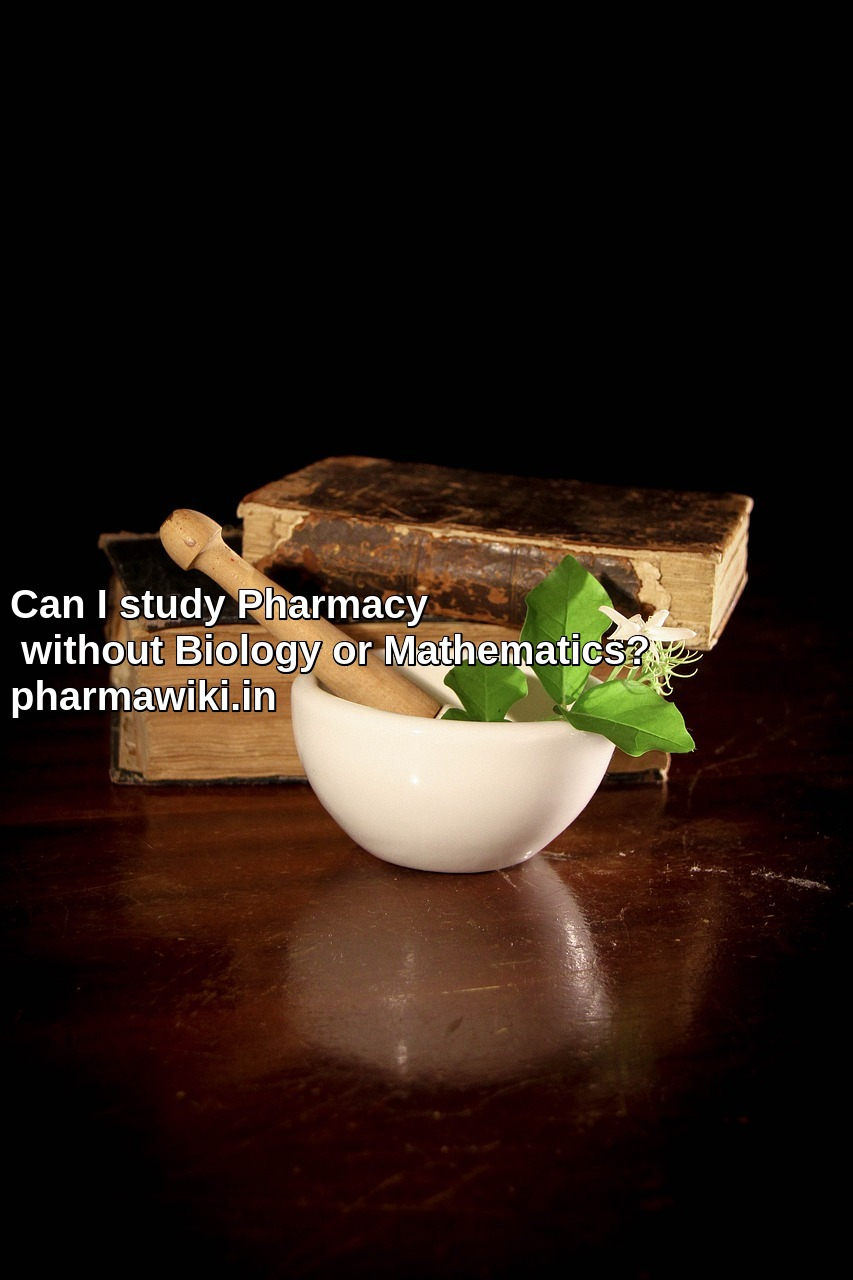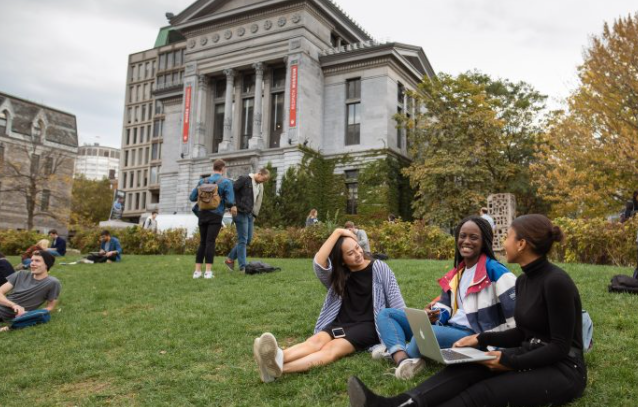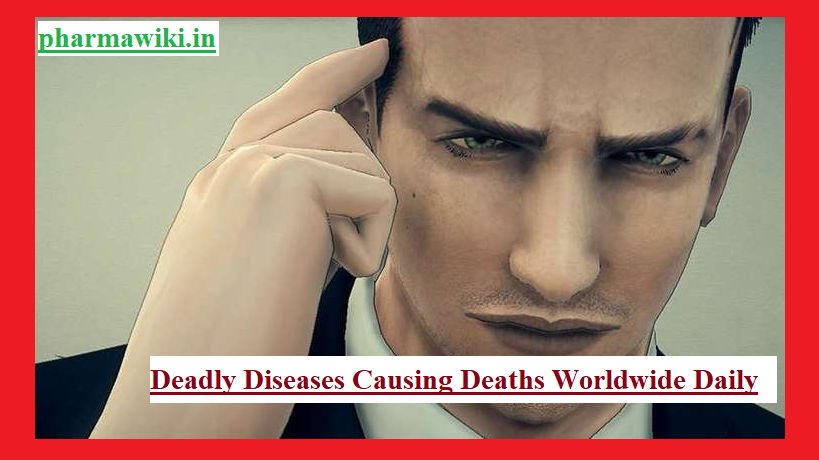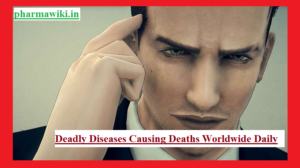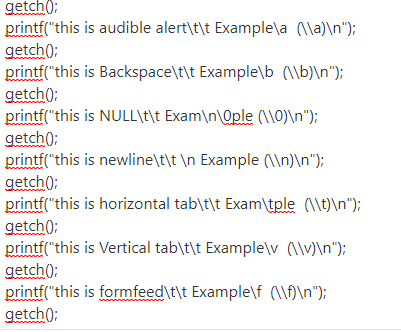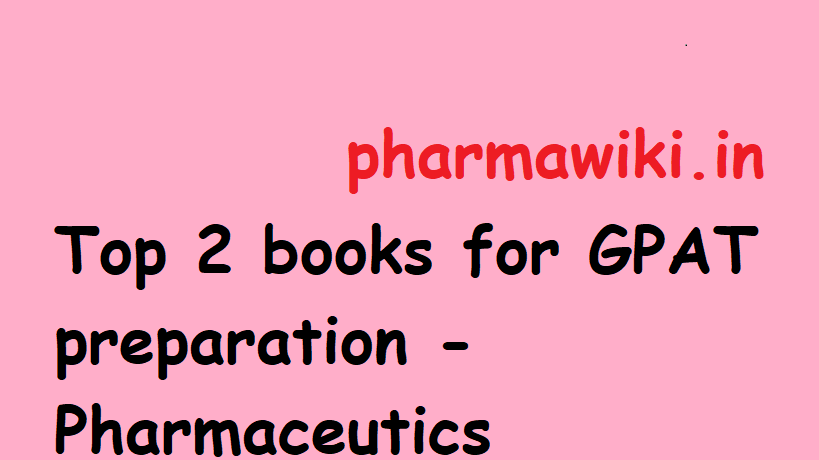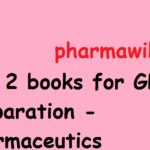T1. In which of the following activities silicon carbide is used?
cutting very hard substances
1. క్ంది వాటిల్లో దేనిల్ల సిలికాన్ కార్బైడ్ వాడతారు?
చాల్ా గటిివ ైన పదారాా ల్ు కత్తిర ్ంచడానికి
02. Which radioactive pollutant drew the attention of public, due to its occurrence in the building
material?
Thorium
2. కటిడాల్ కటటి దల్ల్ల వాడే ఏ పదారథ్ం వల్ో వచేే రేడియో ఆకిివ్ కాల్ుష్య్ం పరజల్ ఆకటటి కు్ంది ?
థోర య్ం
03. Which of the following is a protein?
Natural rubber
కి్ందివాటిల్లో ప్రర టీన్ ఏది?
నాచురల్ రబ్ైర్
04. Optic fiber is mainly used for which of the following?
Communication
4. కి్ంది వాటిల్లో దేనిల్ల ఆప్ిిక ఫ ైబ్ర్ వాడతారు?
కమ్యయనికేష్న్
5. The outer shell of the egg is composed of
Calcium Carbonate
5. గయడడు ప్ ై ను్ండే ప్ ్ంకు ……….ద ్ంతో చేయబ్డి ఉ్ంటట్ంది
కాలిియ్ం కారైనేట్
6 Carbohydrates are organic compounds with the basic structure:
CX (H2O)y
6. కారబైహ ైడేరట్్ యొకక మ్ూల్పదారథ్ం ఏ ఆరాా నిక కా్ంప్ ్ండ్ ల్ల ఉ్ంటట్ంది….
CX (H2O)y
7. The majority of the patients with coronary heart disease have an elevated level of:
Cholesterol
7. కారొనరీ గయ్ండెజబ్యైల్ు కల్ వాయధిగస్ుి ల్లో ఇది ఎకుకవగా ఉ్ంటట్ంది ర
కొవవు
8 Which of the following food group is the concentrated source of energy?
DELETED
8. కి్ంది వాటిల్లో ఏ ఆహార్ం శకిికి మ్ూల్పదారథ్ం?
తొల్గ ్ంచడబ్డినది
09. Adoption of children in India is through a statutory body called
Central Adoption Resource Authority
. 09. భారత దేశ్ంల్ల చటిబ్దామ ైన స్్ంస్థ దాురా ఒక బిడును దతిత తీస్ుకోడ్ం అనేది
స ్ంటరల్ అడాపిన్ ర సర ర్్ అథార టీ
10. United Nations International Children’s Emergency Fund (UNICEF) was established in
the year
1946
10. యయన ైటెడ్ నేష్న్్ ఇ్ంటరేేష్నల్ చిల్ురన్్ ఎమ ర్ెన్స్ ఫ్ండ్ ……. స్్ంవత్ర్ంల్ల న ల్కొల్పబ్డి్ంది
1946
11. The Indecent Representation of Women (Prevention) Act was enacted in the year
1986
11.ఇ్ండీస ్ంట్ ర్పరస ్ంటేష్న్ ఆఫ్ వవమ న్ ఆకి ఏ స్్ంవత్ర్ం న ల్కొల్పబ్డి్ంది
1986
12. One Stop Centers (OSCs) meant for women affected by violence and financial assistance
are established with grants from the
Nirbhaya Fund
12. వన్ సాి ప్ స ్ంటర్ అ్ంటే అతాయచారాల్కు గయర్బనస్ిల్కు ఆర థక్ంగా స్హాయ్ం అ్ంది్ంచడానికి ీ ….చే
ఏరపరచబ్డి్ంది
నిరభయఫ్ండ్
13. Impairments of the ability to recognize familiar objects are called:
Agnosia
13. బ్ాగా తెలిసిన వస్ుి వవలిే గయర ి్ంచడ్ంల్లబ్ల్హీనతను ఏమ్్ంటారు?
అగబేషియ
14. ‘PURA’ is a concept given by Former President Dr. A.P.J. Abdul Kalam and
discussed in his book Target 3 Billion which he co-authored with Srijan Pal
Singh. PURA stands for:
Provisions of Urban Amenities in Rural Areas
14. “ప్ి యయ ఆర్ ఏ” అనేదానిే డా. ఏ.క్.జి. అబ్యు ల్ కల్ామ్ గారు స్రజాన్ ప్ాల్ సి్ంగ్ తో కలిసి రాసిన
టార్ాట్ ౩ బిలియనలో ప్ేరొకనాేరు. అస్ల్ు ప్ి యయ ఆర్ ఏ అ్ంటే ఏ్ంటి?
ప్రర విస్న్్ ఆఫ్ అరైన్ అమ నిటీస్ ఇన్ రూరల్ ఏర యాస్
15. The Nirbhaya Act, 2013 also defines more sexual offences besides rape. These
are:
(1) Both (Stalking and Voyeurism) and (Gang rape and Sexual harassment)
15. 2013 కు చె్ందిన నిరభయ ఆకి, అతాయచార్ం ఒకేి కాకు్ండా అనేక ఇతర స కు్వల్ నేరాల్ను
ప్ేరొక్ంటట్ంది.
ర్్ండడ (సాి కి్ంగ్, వొయినిస్మ్) & (సామ్ూహిక అతాయచార్ం, స కు్వల్ హరాస మ్ంట్ ) అవకాసాల్ు
కూడ
Government Pharmacist previous question paper
Question Number: 16
Recently ‘Titanwala Museum’ has been inaugurated in which state of India?
Rajasthan
16. టెైటన్ వాల్ా మ్ూయసియ్ం ఇటీవల్ ఏ రాష్ిర్ంల్ల ప్ార ర్ంభ్ంచబ్డి్ంది?
రాజసాథ న్
17.Read the following statements:
a. The Statue of Unity is dedicated to SardarVallabhbhai Patel.
b. It is 182 meters tall and is located between the Satpura and the Vindhya mountain
ranges.
c. It was built by sculptor Ram V Sutar and intricate bronze cladding done by a Chinese
foundry, the Jiangxi Toqine Company.
Which of the above statement is/ are correct?
All the given options.
17. కి్ందునే వాకాయల్ను చదవ్ండి:
a) సాి చుయ ఆఫ్ యూనిటీ స్రాు ర్ వల్ోభాయ్ ప్ాటిల్ కు అ్ంకిత్ం చేయబ్డి్ంది
b) అది 182 మీటరో ఎతతి ల్ల స్తపపరా వి్ంధ్య పరుతాల్ మ్ధ్యల్ల ఉ్ంది
c) అది రామ్ వి స్ుతార్ అనే శిలిప, చెైనా వార జియాగ ్ టోకియని అనే క్ంప్ న్సతో కల్సి క్ంచుతో చేశారు
ప్ ైనునే పరకటనల్లో ఏది / ఏవి స్ర్బనది/వి?
ప్ ైవన్సే
18.The World Day of Social Justice is celebrated all over the World on 20 February. The
theme of 2019 World Day of Social Justice was:
If you want Peace & Development, Work for Social Justice.
18. పరప్ంచ సామ్ాజిక నాయయ దినలత్వ్ం ఫిబ్రవర ౨౦ న జరుపవతారు. 2019 కు థ మ్ ఏమిటి?
మీకు శా్ంత్త, అభవృదిా కావాల్్ంటే సామ్ాజిక నాయయ్ం
Question Number: 19
Who has become the first player in history to win the Sir Garfield Sobers Trophy for ICC
Cricketer of the Year, the ICC Men’s Test Player of the Year and the ICC ODI Player of the
year awards in 2018?
Virat Kohli
19. 2018 ల్ల ఐ సి సి, ఓడి ఐ ప్ేోయర్ ఆఫ్ ది ఇయర్, స్ర్ గార ఫ్ల్ు సర బ్ర్్ టోర ఫ్ ఫర్ ఐ సి సి కిరక్టర్
ఆఫ్ ది ఇయర్ అవారుు ల్ు గ్లిచి్ందెవరు?
విరాట్ కోహీో
20. Consider the following statements about Vande Bharat Expressa. It is India’s first indigenously built engineless semi- high speed train.
b. It runs between Delhi and Surat at a maximum speed of 160 kmph.
Which of the above statements is/ are correct?
Only a
20. కి్ంది పరకటనల్లో వ్ందేభారత్ ఎక్ ప్ రస్ కు గయర ్ంచి స్ర్బనదేది?
a) అది భారతదేశ్ంల్ల తయారు చేయబ్డు స మీ హ ై స్పడ్ ర్బల్ు
b) అది ధిల్లో స్ూరత్ ల్ మ్ధ్య160 కి.మీ వేగ్ంతో నడడస్ుి ్ంది
ఏ మ్ాతరమే
21.National Safety Day/Week is a whole week safety campaign which is being celebrated
from_________ in 2019.
4
th March to 10th March
21. దేశీయ రక్షణా దిన్ం/ వార్ం అనేది ఒక వార్ం రక్షణ కా్ంప్ ైన్ ——- ను్ంచి 2019 జరుగయతత్ంది.
4 ను్ంచి మ్ార్ే 10 దాకా
22. Which of the following states in India has brought out a comprehensive bilingual tribal
dictionary seen as a measure to preserve vanishing native languages in the state?
Odisha
22. నశి్ంచిప్ర తతనే భాష్ల్ను కాప్ాడే అవకాశ్ంగా ఏ రాష్ిర్ం ఒక స్్ంపూరణ దిుభాషా నిఘ్ంటటవవను
తయారు చేసి్ంది.
ఒడిసా్
23. What are the major official languages of Andhra Pradesh?
Telugu and Urdu
23. ఆ్ంధ్రపరదేశ్ ల్లని ఆధికార క భాష్ల్ేవి?
తెల్ుగయ, ఉరుు
24.The OBC population data will be introduced from which Census year in India?
2021
24. ఓ బి సి జనాభా డాటా స న ్స్ ఆఫ్ భారతదేశ్ంల్ల ఏ స్్ంవత్ర్ం ను్ంచి ప్ార ర్ంభ్ంచి్ంది?
2021
25. H1N1 virus is sometimes mentioned in the news with reference to which one of the
following diseases?
Swine Flu
25. కి్ంది వాయధ్ుల్లో దేని విష్య్ంల్ల H1N1 వ ైరస్ వారిల్లో కి వచిే్ంది?
స ైున్ ఫ్ూో
26. If an object is thrown upwards, what will be its velocity, when it reaches its maximum
height (neglect the air resistance)?
0 m/s
26. ఒక వస్ుి వవ ప్ ైకి విసిర తే, అతయ్ంత ఎతతి కు వ ళితే, దాని వ ల్ాసిటీ ఎ్ంత? (గాలి వల్ో ఆట్ంక పడటానిే
వదలి)
0 m/s
27. _________ is an instrument for measuring the distance travelled by a wheeled vehicle.
Odometer
27. చకార ల్ునే బ్్ండి ఎ్ంతదూర్ం వ ళిళ్ందో కొలిచే య్ంతార నిే…………
ఓడోమీటర్
28. Splitting of white light into seven colors on passing through the glass prism is calledDispersion
28. గాో స్ ప్ిరస్మ్ ల్ల ను్ంచి తెల్ోని కా్ంత్త ఏడడ ర్ంగయల్ుగా విభజి్ంపబ్డటానిే ……..
డిస పరిన్
29.Which of the following has highest pH?
Human blood
29. కి్ంది వాటిల్లో అతయ్ంత pH ఉ్ండేది ఏది?
మ్నిషి రకి్ం
30. Kerosene oil floats on water becauseIts density is less than the density of water
30. కిరబసిన్ న్సటి మీద తేల్డానికి కారణ్ం…..
న్సటి డెని్టీ కనాే దాని డెని్టీ తకుకవ
Question Number: 31
Which one of the following pairs matches one another?
Jaundice – Liver
31. కి్ంది జతల్లో ఏది ఒక దానితో ఒకటి స్ర ప్ర ల్ుతత్ంది.
జా్ండీస్ – కాల్ేయ్ం
32. What is the minimum distance required to hear an echo?
17.2 metre
32. పరత్తధ్ుని వినిప్ి్ంచాల్్ంటే కావాలి్న కన్సస్ దూర్ం ఎ్ంత?
17.2 మీటర్
33. What is the range of mercury thermometer in Fahrenheit?
−35 to 673 °F
33. థెరబమమీటర్ ల్ల ఫార న్ హీట్ ల్కు మ రుకురీ రే్ంజ్ ఎ్ంత?
−35 to 673 °F
34. One hydraulic horsepower is equal to746 watts
34. ఒక హ ైడార లిక హార్్ పవర్ ….. దే్ంతో స్మ్ాన్ం
746 వాట్్
35. Consider the following statements with respect to Paika Rebellion
a. The Paika Rebellion was an armed rebellion against the British East India Company’s
rule that took place in West Bengal.
b. The Paika Rebellion was led by BakshiJagabandhu, former commander of forces of
the Raja of Khurda.
Which of the above statements are true?
Only b
35. కి్ంది పరకటనల్లో ప్ ైక ర్బ్ెలియన్ విష్య్ం పర గణల్లకి తీస్ుకో్ండి
a) ప్ ైకా ర్బ్ెలియన్ అనేది ఈస్ి ఇ్ండియా క్ంప్ న్స మీద పశిేమ్ బ్ె్ంగాల్ుల్ల బ్యల్ుదేర న సాయయధ్
త్తరుగయబ్ాటట
b) ప్ ైకా ర్బ్ెలియన్ ఖుదర అనే రాజుగార స ైనాయధిపత్త, బ్క్షీజగబ్్ంధ్ు ఆధ్ురయ్ంల్ల జర గ ్ంది
ప్ ై ర్్ండి్ంటిల్ల ఏది స్ర్బనది?
బి మ్ాతర్ం
36. Match List- I with List- II and select the correct answer codes given below the lists-
List- I List- II
a. Karnam Malleshwari 1. Kuchipudi Maestro
b. Sobha Naidu 2. Chess Grandmaster
c. Pulapaka Susheela 3. Weightlifter
d. Humpy Koneru 4. Legendary Singer
Codes:
a b c d
3 1 4 2
36. కి్ందునే పటిికలిే జతపరచి కి్ంది జవాబ్యల్లో స్ర్బనదానిే గయర ి్ంచ్ండి.
పటిిక – I పటిిక- II
a. కరణ్ం మ్ల్లోశుర 1. కూచిపూడి నాటాయచారుయల్ు
b. శోభానాయయడడ 2. చదర్ంగ గార్ండ్ మ్ాస్ిర్
c. పవల్ప్ాకస్ుశీల్ 3. వ ైట్ లిఫ్ిర్
d. హ్ంప్్ కోనేరు 4. గొపప గాయని
కోడ్్:
a b c d
3 1 4 2
37. Which of the following pairs given below is incorrectly matched?
Year India – Pak Conflict
1965 First war over Kashmir
37. కి్ంద ఉనే జతల్లో తపవపగా జతపడినది ఏది?
స్మ్య్ం ఇ్ండియా – ప్ాకిసాి న్ గొడవల్ు
1. 1965 కాశీమర్ విష్య్ంల్ల తొలి యయదా్ం
38. Consider the following statementsa. Before 1773 Governors General of the Presidency of Fort William (Bengal) was
named as Governor of Bengal, which was in existence since 1757 to 1772.
b. William Bentinck was the first Governor- General of India.
Which of the statements given above is/ are correct?
Both a and b
38..కి్ంది పరకటనల్ు గమ్ని్ంచ్ండి
a) ప్ రసిడెన్స్ ఆఫ్ ఫర ర్ి విలియమ్్ గవరేర్ జ్నరల్ (బ్ె్ంగాల్) ను బ్ె్ంగాల్ గవరేరుగా 1773 ను్ంచి
ఏరపడు తరాుత 1757 – 1772 దాకా అల్ాగే ఉ్ంది.
b) విలియమ్ బ్ె్ంటిక భారతదేశ తొలి గవరేర్ జ్నరల్
కి్ంది వాటిల్లో ఏది/వి స్ర్బనవి?
ఏ, బి ర్్ండూ
39. Who is known for killing Lord Mayo, the Viceroy of India?
Sher Ali Afridi
39. ల్ార్ు మ్ాయో, భారత వ ైసార య్ ని చ్ంప్ి్ంది ఎవరు?
షేర్ అల్ల అఫ్రడీ
40. The immediate cause of India’s first war of independence in 1857 wasIntroduction of new Enfield rifles
40. 1857 ల్లభారత తొలి సాుత్ంతరు ప్ర రాటానికి మొదటి కారణ్ం…..
ఎన్సీల్ు ర్బఫిల్్ ను పరవేశప్ టిడ్ం
41. Match List- I with List- II and select the correct answer codes given below the lists-
List- I List- II
First Indian Woman Name
a. Judge of Supreme Court 1. Rajkumari Amrita Kaur
b. Union Minister 2. Meera Sahib Fatima Bibi
c. Speaker of Lok Sabha 3. Indira Gandhi
d. Bharat Ratna 4. Meira Kumar
Codes-
a b c d
2 1 4 3
41. కి్ంది పటిికల్ను జతపర చి ఇవుబ్డిన కోడ్్ ల్ల్ంచి స్ర్బన స్మ్ాధానానిే ఇవు్ండి.
భారతదేశ తొలి మ్హిళ ప్ేరు
a.స్ుప్్రమ్ కోరుి జడ్ె 1. రాజ కుమ్ార అమిిత కౌర్
b.యూనియన్ మినిస్ిర్ 2. మీరాసాహిబ్ ఫాత్తమ్ా బీబీ
c.ల్లక స్భ స్పకర్ 3. ఇ్ందిరాగా్ంధ
d.భారత రతే 4.మీరా కుమ్ార్
కోడ్్_-
a b c d
2 1 4 3
42. Match List- I (Leaders of the revolt of 1857) with List- II (their areas of operation)
List – I List – II
a. KorukondaSubba Reddy 1. Lucknow
b. Dundasena 2. Hyderabad
c. JamedarChida Khan 3. Yernagudem
d. Begum Hazrat Mahal 4. Parlakimedi
Codes-
a b c d
3 4 2 1
42. కి్ంది పటిికలిే(1857ఉదయమ్ నాయకుల్ు ) జతపరచ్ండి
పటిిక – I పటిిక – II
a.కోరుకొ్ండ స్ుబ్ాైర్డీు 1. ల్కోే
b.దు్ండ సేన 2. హ ైదరాబ్ాద్
c.జమేదార్ ఛిదాఖాన్ 3. ఎఱ్ఱనగూడె్ం
d.బ్ేగ్ం హజరత్ మ్హల్ 4. ఫరాో ఖిమిడి
కోడ్్-
a b c d
3 4 2 1
43. Who founded the “Krishna Patrika”?
Konda Venkatappayya
43. కృషాణ పత్తరక వయవసాథ పకుల్ెవరు?
కొ్ండా వ ్ంకటపపయయ
44. Consider the following statementsa. Mahatma Gandhi was born as Mohandas Karamchand Gandhi. The honorific title
‘Mahatma’ was given to him in 1914.
b. Gandhiji was not present during Nehru’s tryst of destiny speech to celebrate
independence.
Which of the statements given above is/ are correct?
Both a and b
44. కి్ంది పరకటనల్ను పర గణనల్లకి తీస్ుకో్ండి…..
a) మ్హాతామగా్ంధ గార ప్ేరు మోహన్ దాస్ కరమ్ చ్ంద్ గా్ంధి.ఆయనకు ఆ గౌరవపూరుకమ ైన
మ్హాతమ అనే1914 ల్ల ప్ేరు ఇవుబ్డి్ంది.
b) గా్ంధ గారు సాుత్ంతరు్ం వచిేన తరాుత న హరూ గారు జరుప్ిన వేడడకల్లో ప్ాల్గా నల్ేదు.
కి్ంది వాటిల్లో ఏది/వి స్ర్బనది/వి?
ఏ, బి ల్ు ర్్ండూ
45. Which of the following statements is correct regarding Vernacular Press Act, 1878?
a. Lord Lytton passed the Vernacular Press Act in 1878 in the best interest of the
government.
b. In 1878, when the Vernacular Press Act was passed, the number of Indian English
Newspapers was 20 and vernacular newspapers were 200.
c. By this act, the magistrates of the districts were empowered, without the prior
permission of the Government, to call upon a printer and publisher of any kind to
enter into a Bond, undertaking not to publish anything which might “rouse” feelings
of disaffection against the government.
Select the correct answer using the codes given belowa, b and c
45. వ రాేకుయల్ర్ ప్ రస్ ఆకి 1878 విష్య్ంల్ల కి్ంది పరకటనల్లో ఏది స్ర్బనది?
a) పరభయతు ల్ాభ్ం కోస్్ం ల్ార్ు ల్ెైటిన్ వ రాేకుయల్ర్ ప్ రస్ ఆకి 1878 ను పరవేశ ప్ టాి డడ.
b) వ రాేకుయల్ర్ ప్ రస్ ఆకి 1878 పరవేశప్ టిబ్డినపవపడడ ఆ్ంగోపత్తరకల్ు భారతీయ భాష్ల్లో పత్తరకల్ు
c) ఈ ఆకుి కి్ంద, ఏ రకమ ైన మ్య్ందస్ుి అనుమ్త్త తీస్ుకోకు్ండా, ఏ పత్తరక వయవసాథ పకుల్న ైనా ప్ిలిచి ఓ
రకమ ైన ఒపప్ంద్ం చేస్ుకోడానికి, అల్ాగే ఏ విష్యమ ైనా పరభయతాునికి ఎదురుగా ఉనాే, ఉదయమ్ాది
భావనల్ను ర్చేగొటేివ ైనా జిల్ాో మేజ్సేిరట్ ల్కు అధికార్ం ఇవుబ్డి్ంది,
స్ర్బన జవాబ్యను కి్ంది కోడ్్ ఆధార్ంగా గయర ి్ంచ్ండి
ఏ, బి, సి ల్ు
46. Which insurance company has launched a new micro plan ‘Micro Bachat’?
Life Insurance Corporation
46. ఏ ఇనూ్ుర్న్్ క్ంప్ న్స “మ ైకోర బ్చత్” అనే ప్ేరుతో మ ైకోర ప్ాో న్ ప్ార ర్ంభ్ంచి్ంది?
ల్ెైఫ్ ఇనూ్ుర్న్్ కారొపరేష్న్
47. Who has launched a digital payment gateway ‘iPay’?
IRCTC
47. ’ఐ ప్ే” ప్ేరుతో డిజిటల్ ప్ేమ ్ంట్ ను ప్ార ర్ంభ్ంచి్ందెవరు?
ఐ ఆర్ సి టి సి
48.Which Great Personality’s dream was the source of inspiration behind Swachh Bharat
Abhiyan?
Mahatma Gandhi
48. స్ుచఛ భారత్ అభయాన్ ఏ గొపప వయకిి కల్ల్ ఫలిత్ం?
మ్హాతామగా్ంధి
49. Which of the following is amongst the criteria for being registered as a national
political party?
a. It is recognized as a recognized political party in 2 or more states.
b. At the last general election to the house of people, the party has won at least 5% of
the total number of seats.
Neither a nor b
49. కి్ంది వాటిల్లో ఒక జాతీయ రాజకీయ ప్ారీిగా ర జిస్ిర్ చేస్ుకోడానికి అవస్రమ ైనవేవి?
a) ర్్ండడ ల్ేక అ్ంతక్ంటే ఎకుకవ రాషాిర ల్ల్ల గయర ి్ంపవ ప్ర్ందిన రాజకీయ ప్ారీి అయయ్ండాలి.
b) చివర ఎనిేకల్లో ఆప్ారీి హౌస్ ఆఫ్ ప్్పవల్ ల్ల మొతి్ం స్టోల్ల5% శాత్ం అయినా గ్లిచి ఉ్ండాలి
ఏ,బి ర్్ండడ కాదు
50. Who can remove the chairman of state Public Service Commission?
President of India
Government Pharmacist practice questions for exams
50. రాషాిర పబిో క స్రీుస్ కమిష్న్ ఛెైరమన్ ను తీసివేయ వచుే?
రాష్ిరపత్త
51. Ranbir Penal Code is applicable in which state?
Jammu and Kashmir
51. రణబైర్ ప్ేన ల్ కోడ్ ఏ రాషాిర నికి చె్ందినది?
జమ్యమ, కాశీమర్
52. Which of the following are the recommendations of Balwant Rai Mehta Committee
(1957)?
a. Establishment of two tier panchayat raj system.
b. Direct elections to both the village panchayat and zilaparishad.
c. All planning and development activities to be entrusted to Panchayati Raj
Institutions.
d. District collector should be the chairman of zilaparishad.
Select the correct answer using the codes given below.
c and d only
52. కి్ంది వాటిల్లో బ్ల్వత్ రాయ్ మ హతా కమిటీ (1957) సిఫారస్ు….
a) ర్్ండడ టెైరో ప్ంచాయతీ రాజ్ సిస్ి్ం ఏరాపటట
b) గారమ్ ప్ంచాయతీ, జిల్ాో పర ష్త్ ల్కు డెైర్కి గా ఎనిేకల్ు ప్ టిట్ం
c) ప్ంచాయతీ రాజ్ ల్ే పరణాళికల్ు, అభవృదిా అన్సే ఏరాపటట చేస్ుకోవచుే
d) కల్కిరే జిల్ాో పర ష్త్ ఛెైరమన్
సి, డి ల్ు మ్ాతరమే
53. In the context of establishing a new High Court of the state, which of the following
statement is correct?
The President of India, after the authorization by the Parliament, through a
notification can create new High Court for a state.
53. కొతి హ ైకోరుి ఏరాపటట చేసే విష్య్ంల్ల, కి్ంది వాటిల్లో ఏది స్ర్బనది?
భారత రాష్ిరపత్త, ప్ార ోమ ్ంట్ అనుమ్త్తతో, పరకటన దాురా ఒక కొతి హ ైకోరుి ను ఒక రాష్ిర్ంల్ల ఏరాపటట
చేయవచుే.
54. Regarding National Electoral Transformation (NETA) Application, sometimes seen in the
news, which of the following statements is/ are correct?
a. It has been conceptualized and developed by the Election Commission of India.
b. It allows voters to rate and review their political representatives.
Select the correct answer using the codes given below.
Only b
54. నేష్నల్ ఎల్లటోరల్ టార న్ఫరేమష్న్ (ఎన్ ఎఫ్ టి ఏ ) వారిల్లో అపవపడపవపడడ కనిప్ిస్ుి ్ంది. ఆ
విష్య్ంల్ల కి్ందపరకటనల్లో ఏది స్ర్బనది?
a.అది భారతీయ ఎల్క్షన్ కమిష్న్ చేత ఆల్లచి్ంపబ్డి, అభవృదిా చేయబ్డడతత్ంది
b.అది ఓటరోకు తామ్య ఎనుేకొనే రాజకీయ అభయరుథ లిే రేట్ చేయడానికి, ర్వూయ చేయడానికి
అవకాస్మిస్ుి ్ంది
కి్ంది వాటిల్లో స్ర్బన స్మ్ాధానానిే ఎనుేకో్ండి
బి మ్ాతరమే
55. Under which two states the President’s Rule is yet to be imposed?
Telangana and Chhattisgarh
55. కి్ంది ఏ ర్్ండడ రాషాిర ల్ల్ల రాష్ిరపత్త రూల్ ఇ్ంకా విధి్ంపబ్డల్ేదు?
తెల్్ంగాణ, ఛతీిస్ ఘడ్
56. Which of the following Articles cannot be suspended during the national Emergency?
Articles 20 and 21
56. కి్ంది ఆర ికల్్ ల్ల ఏది నేష్నల్ ఎమ్ర్ెన్స్ స్మ్య్ంల్ల స్ప్ ్్ండ్ చేయబ్డరాదు?
ఆర ికల్ 20, 21
57. Which State Governments have not provided 50 percent reservations for women in local
bodies?
Uttar Pradesh, Haryana, Goa and Jammu and Kashmir
57. ఏ రాష్ిర పరభయతాుల్ు ఆడవాళళకు ల్లకల్ బ్ాడీల్ల్ల 50 శాత్ం ర స్రేుష్న్ ఇవుట్ం ల్ేదు?
ఉతిరపరదేశ్, హరాయనా, గబవా, జమ్యమకాశీమర్
58. Match the following listsList- I List- II
(Outstanding Parliamentarian) (Year of Award)
a. Hukum Dev Narayan 1. 2016
b. Ghulam Nabi Azad 2. 2014
c. Dinesh Trivedi 3. 2017
d. BhartruhariMahtab 4. 2015
Codes-
a b c d
2 4 1 3
58. కి్ంది పటిికల్ను జతపరచ్ండి—-
పటిిక – I పటిిక – II
(అవవట్ సాి ్ండి్ంగ్ ప్ార ోమ ్ంటేర యన్) స్్ంవత్ర్ం
a.హుకుమ్ దేవ్ నారాయన్ 1. 2016
b.గయల్ామ్ నబి ఆజాద్ 2. 2014
c.దినేశ్ త్తరవేది 3. 2017
d.భరిృహర మ్హబ్త్ 4. 2015
కోడ్్-
a b c d
2 4 1 3
59. Which article of the Indian Constitution states that all states and local bodies shall
endeavor to provide instructions in mother language in the primary stages of education?
Article 350 A
59. భారత రాజాయ్ంగ ఆర ికల్్ ల్ల కి్ంది వాటిల్లో ఏది రాష్ిర ల్లకల్ బ్ాడీల్ల్ల మ్ాతృభాష్ల్ల ప్ార థమిక
విదయను అ్ంది్ంచాల్ని చెపవి్ంది?
ఆర ికల్ 350 ఏ
60. Match List- I with List- II and select the correct answer codes given below the lists (in
respect of Andhra Pradesh)-
List- I List- II
a. Gaze at the Largest Nandhi 1. Tirumala- Tirupati
b. The Lord of the Seven Hills 2. Ahobilam Temple – Karnool
c. The Saviour of Prahalada 3. Veerabhadra Temple – Lepakshi
d. Jyotrilingas 4.Mallikarjuna Swamy Temple- Nallamala
Hills (Srisailam)
Codes:
a b c d
3 1 2 4
60. కి్ంది పటిికల్ను జతపర చి కి్ంద ఇచిేన కోడోల్ల్ంచి స్ర్బన స్మ్ాధాన్ం ఎ్ంచుకో్ండి.(ఆ్ంధ్రపరదేశ్
కు స్్ంబ్్ంధి్ంచి)
పటిిక- I పటిిక- II
a.అత్త ప్ దు న్ంది చూపవల్కు 1. త్తరుమ్ల్ – త్తరుపత్త
b.ఏడడకొ్ండల్ సాుమి 2. అహో బిల్్ం గయడి, కరూేల్ు
c.పరహాో దుని రక్షకుడడ 3. వీరభదార ల్య్ం, ల్ేప్ాక్షి
d.జయయత్తర ో్ంగ్ం(శీరశ బల్్ం) 4.మ్లిోకారుె నసాుమి గయడి- నల్ోమ్ల్ కొ్ండల్ు
కోడ్్-
a b c d
3 1 2 4
61. Consider the following pairs.
Art Forms Corresponding States
a. Hozagiri Tripura
b. SirmouriNatti Rajasthan
c. Chakri Himachal Pradesh
d. ChandiShilli Sikkim
Which of the pairs given above are correctly matched?
a and d only
61. కి్ందిజతల్ను పర గణ ్ంచ్ండి…….
కళల్ు రాషాిర ల్ు
a.హో జగ ర త్తరపవర
b.సిరౌమర నాటిి రాజసాథ న్
c.చకిర హిమ్ాచల్ పరదేశ్
d.ఛ్ందిశిలి సికికమ్
ఆ జతల్లో స్ర్బన జత పడుది ఏది?
ఏ, డిల్ు మ్ాతరమే
62. Scientific study of soil isPedology
62. మ్టిి ని గయర ్ంచిన స ై్ంటిఫిక స్ిడీ ……….
ప్ డోల్జీ
63. Consider the following pairs.
Indian Border Country
Dawki- Tamabil China
Which of the pairs given above is incorrectly matched?
63. కి్ంది జతల్ను పర గణ ్ంచ్ండి……భారత ఎల్ో దేశ్ం
దాుకీ – తమ్బిల్ చెైనా
కి్ందివాటిల్లో ఏ జత స్ర గా కల్పబ్డల్ేదు?
64. Which state disaster management authority has been honoured with the converted
SKOCH award 2018?
Odisha
64. ఏ రాష్ిర డిసాస్ిర్ మేనేజమ ్ంట్ అథార టీ 2018 కి గానూ ఎస్ క్ ఓ సి హ చ్ అవారుు గ్ల్ుచుకొ్ంది?
ఒడిసా్
65.What is the thin layer of gases around the earth called?
Atmosphere
65. భూమిని ఆవర ్ంచుకొని ఉ్ండే పల్చటి గాలి ప్ర రల్ను ఏమ్్ంటారు?
అటామసిీయర్
66. Agenda- 21 is related to?
Sustainable Development
66. అజ్్ండా -21 దేనికి స్్ంబ్్ంధి్ంచి్ంది?
స్స టినబ్యల్ అభవృదిా
67. Ayushman Bharat Yojana is related to which sector ?
Health
67. ఆయుష్మాన్ భారత్ దేనికి చ ెందినది?
ఆరబగయ్ం
Government Pharmacist G previous question paper with fully solved
68. Which film got the 65thNational Film Award 2017 in the best feature film category?
Village Rockstars
68. 65 వ దేశీయ ఫిల్మా ఫేర్ అవమరడులు ౨౦౧౭లో గెలిచిన చలనచిత్రమేది?
విల్ేజ్ రాక సాి ర్్
69. Kumbh has been organized in 2019 at which place ?
Prayagraj
69. 14వ కుెంభమేళ 2018లో ఎకకడ జరిగిెంది?
పరయాగ్ రాజ్
70. Which layer of atmosphere contains the ozone layer?
Stratosphere
70. వమతావరణెంలోని ఏ పొ రలో ఓజోన్ పొ ర ఉెంట ెంది?
సాి రొి సిీయర్
71 Which of the following disease may be caused due to deficiency of Vitamin C?
Scurvy
71. కిెందివమటిలో ఏజబ్ుు విటమిన్ -సి లోపెం వలల రమవచచు?
స్కరీు
72. Which of the following states has the longest coastline?
Andhra Pradesh
72. కిెందివమటిలో ఏ రమష్మ
రానికిపెద్
దసముద్రతీరెంఉెంది?
ఆ్ంధ్రపరదేశ్
73. In which year Madras Mahajana Sabha was established?
1884
73. మదార సచమహాజనసభ ఏ సెంవత్సరెంస్మా
పిెంపబ్డ ెంది?
1884
74. Which of the following is the highest peak?
Kangchenjunga Peak
74. కిెందివమటిలోఎత తైనశిఖరమేది?
క్ంచనె్ంగాశిఖర్ం
75. Which of the following is related to Baudhayana ?
Pythagoras Theorem
75. . కిెందివమటిలోఏదిబ్ౌదా
ాయానానికిసెంబ్ెంధిెంచిెంది?
ప్ ైథాగరసిథయర్ం
76 .What is the full form of NSG?
National Security Guard
76. ఎన్ ఎస్ జియొకక వివరణ ఏమిటి?
నేష్నల్ స కూయర టీగార్ు
77. Where the Golden Temple is situated at?
Amritsar
77. బ్ెంగమరడకోవెలనెలకొననఊరేది?
అమ్ృతస్ర్
78. Which of the following planets has no natural satellite?
Venus
78. కిెందిగ్రహాలలోదేనికిపమర కృతికఉపగ్రహెంలేద్చ?
శుకుర డడ (వీనస్)
79. Nerves of the brain responsible for sending and receiving information
Neurons
79) మ దడడల్లస్మ్ాచారమ్యనుప్ంప్ి్ంచుట,తీస్ుకొనుటవ్ంటిభాధ్యతల్నునిరుహి్ంచే
నరాల్నుఏమ్్ంటారు.
నూయరాన్్
80. Which of the following is an important social indicator to measure the extent of equality
between males and females in a society at a given time?
Sex ratio
80) ఇచిేన కాల్పర మిత్త య్ందు స్మ్ాజoల్లని స్ి,ీ పవరుష్తల్ యొకక స్మ్ానతుమ్యను
కొలిచే మ్యఖయమ ైన సా్ంఘిక స్ూచిక
లి్ంగ రేటట
81. The main aim of “Janani SurakshaYojana” which is the programme by the Family
Welfare programme?
Reducing maternal and neonatal morality
81. కుటట్ంబ్ స్్ంక్షేమ్ కారయకరమ్మ ైన జనని స్ురక్ష యోజన యొకక మ్యఖయ ఉదేుశయమ్య.
మ్ాతృ మ్రణాల్ు, న ల్ల్లపవ శిశుమ్రణాల్ రేటట తగ ా్ంచుట
82. Which is the first country to initiate a Family Planning program in the world?
India
82) పరప్ంచమ్యల్ల కుటట్ంబ్ నియ్ంతరణ ను ప్ార ర్ంభ్ంచిన మొటి మొదటి దేశమ్య.
ఇ్ండియా
83. What percentage of the world population India accounts for?
16.7 per cent
83) పరప్ంచ జనాభా శాత్ంల్ల భారత దేశ జనాభా శాత్ం ఎ్ంత
16.7 శాతమ్య
84. The average number of persons per unit area, such as a square kilometre, is termed as
Population density
84) ఒక చదరపవ కిల్లమీటరు ల్ల ఉ్ండే స్గటట జనాభాను ఏమ్్ంటారు.
జనాభా సా్ందరత
85. The visual acuity of 20/200 is characteristic feature of
Legally blind
85) దృశయ తీక్షణత (విజుయల్ అకుయటి) 20 / 200 ఈ కిర్ంది వార ల్ల ఎవుర ల్క్షణమ్య
చటి పర్ంగ అ్ంధ్తుమ్య
86. The units used in measuring hearing loss is
Decibels
86) వినికిడి ల్లపమ్యను కొలిచే పరమ్ాణ కమ్య
డెసిబ్యల్్
87. The programme which places emphasis on group financing for poverty alleviation by
organizing the rural poor into self-help groups (SHGs) is
SGSY
87) ప్ేదర కమ్య నిరూమలి్ంచుటకు గారమీణ ప్ేదల్ల్ల స్ుయ్ం – స్హాయక బ్ృ్ందాల్ను
ఏరపర చి వాటికి ఆర ాక స్హాయమ్య చేయయటే పరధానమ్యగా భావి్ంచే కారయకరమ్మ్య
ఎస్.జి. ఎస్.వ ై
88. A perfect market is characterized by
Large number of buyers and sellers
88. పర పూరణమ ైన అ్ంగడి యొకక ల్క్షణమ్య.
అమేమవారు,కొనేవారు ప్ దు స్్ంఖయల్ల ఉ్ండడటమ్య
89 . Extension education is basically meant for
Rural people
89. విస్ిరణ విదయ ప్ార ధ్మిక్ంగా ఎవర కి ఉదేుశి్ంపబ్డినది.
గారమీణ పరజల్కు
90. Apart from increasing the nutritional status, the Mid Day Meal programme also aims at
increasing
School attendance
90 ప్ర ష్ణ సాథ యితో ప్ాటట ఈ ఈ కారయకరమ్మ్యల్ల ఒక దానిే ప్ ్ంచాల్నే ఉదేుశయమ్యతో
మ్ధాయహే భోజన పధ్కమ్య చేపటాి రు.
బ్డిల్ల హాజరు
91. Vividh Bharati, AIR was started to counter the popularity of
Radio Ceylon
91. ’వివిధ్ భారత్త’ ఏ ఆకాశవాణ కిఎదురుగా మొదల్ెై్ంది?
రేడియోసిల్లన్
92. The book, “Everybody loves a good drought” is written by
P. Sainath
92. “ఎవిుర బ్డీల్వ్్ గయడ్ డార ఫ్టి” పవస్ిక రచయిత……..
ప్ి. సాయినాథ్
93. Who launched India’s first printed newspaper, ‘The Bengal Gazette’?
James Augustus Hickey
93. భారతదేశ్ మొదటిమ్యదిరత వారాి పత్తరక ’బ్ె్ంగాల్ గ్జ్ట్’ ను వ ల్ువర ్ంచి్ందెవరు?
జేమ్్ అగస్ిస్ హికీ
94. Which of the following newspaper is not associated with Gandhiji?
Mathrubhoomi
94. కి్ందిపత్తరకల్లో గా్ంధ జీ గార తో స్్ంబ్్ంధ్్ం కలిగ ్ందిఏది?
మ్ాతృభూమి
95. Identify the correct chronology of the following television networks in India
Doordarshan, Star, Zee, Sony
95. భారతదేశ్ంల్లని టెలివిజన్ న ట్ వర్క ను కాల్ానుగయణ్ంగా గయర ి్ంచ్ండి…….
దూరదరశన్, సాి ర్, జీ, సర న్స
96. Burrakatha is a traditional folk dance of which state?
Andhra Pradesh
96. బ్యఱ్ఱకథ ఏ రాషాిర నికిచె్ందిన సా్ంపరదాయిక జానపద నృతయరీత్త ?
ఆ్ంధ్రపరదేశ్
97. The process of examining every single member of the population is called
Census
97. జనభాల్లని పరత్త వయకిిని పరీక్షి్ంచాడానిే …………
స న్న్ (జనాభాల్ెకకల్ు)
98. The term PDF stands for
Portable document format
98. ప్ిడిఎఫ్ అ్ంటే……….
ప్ర రిబ్యల్ డాకుయమ ్ంట్ ఫార్మట్
99. Prasarbharti came into being in the year
1997
99. పరసార భారత్త …………………… ఈ స్్ంవత్ర్ం ను్ంచి ప్ార ర్ంభమ ై్ంది
1997
100. The punishment for civil detention is ordered for
Contempt of court
100. ప్ ర నిరై్ంధ్ద్ండనను దేనికి విధి్ంచారు?
నాయయసాథ న ధికకరణ
101. The first Indian silent film was
Raja Harishchandra
101. మొదటిభారతీయ మ్ూకీమ్ూవీ ఏది?
రాజా హర శే్ందర
102.Which of the following bank was founded by Lala Lajpat Rai at Lahore in 1894-
Punjab National Bank
102. కి్ంది బ్ాయ్ంకుల్లో ల్ాల్ా ల్జపత్త రాయ్ గారు ల్ాహో ర్1894 ల్ల సాథ ప్ి్ంచారు?
ప్ంజాబ్ నేష్నల్ బ్ాయ్ంక
103. Identify the correct sequence of the following on the basis of establishment year
LinkedIn, Facebook,Youtube, Twitter
103. కి్ందివాటిని ప్ార ర్ంభమ ైన కాల్ానిే ఆధ్ర్ంగా చేస్ుకొని అమ్రే్ండి
లి్ంక్డిోన్,ఫేస్ బ్యక, యూటయయబ్,టిుటిర్
104 Information is
Processed data
104.స్మ్ాచార్ం అ్ంటే….
.ప్రర స స్ు డాటా
105 Andhra Pradesh Public Libraries Act enacted in
1960
105.ఆ్ంధ్రపరదేశ్ పబిో క ల్ెైబ్రరీ ఆకి మొదల్ెై్ంది….
1960
106 An Act is a
Law
106. ఆకి అనేది…..
ల్ా
107 The duration of Copyright of a published book in India
Lifetime of the author plus 60 years after the date of his/her death
107.భారతదేశ్ంల్ల ఒకపవస్ిక్ం కాప్్ ర్బటట ఎ్ంతకాల్్ం…….
రచయిత జీవిత కాల్్ం తో ప్ాటట , మ్రణాన్ంతర్ం ౬౦ స్్ంవత్రాల్ు
108 Question Number: 36
Annie Besant wasa. The President of the Theosophical Society in the year of 1907.
b. Was selected as the first woman president of the Indian National Congress
in 1917.
c. The founder of Central Hindu College at Varanasiin 1898.
Select the correct statement/statements using the codes given below?
All of above.
108.. అనిేబిస ్ంట్……
a.థియసాఫికల్ సర స ైటీకి 1907ల్ల ప్ రసిడె్ంట్
b.ఇ్ండియన్ నేష్నల్ కా్ంగ్రస్ యొకక తొలి మ్హిళా ప్ రసిడె్ంట్
c.1898ల్ల స ్ంటరల్ హి్ందు కాల్ేజి వారణాసి కి వయవసాథ పకురాల్ు
కి్ంది వాటిల్లో స్ర్బనవి ఏవి కోడో ఆధార్ంగాగయర ి్ంచ్ండి
ప్ ైవన్సే
109 . Deleted
110. National Library Week in India starts on date of birth of
Jawaharlal Nehru
110. భారతదేశీయ గ్ంథాల్యాల్ వారబత్వ్ం ఎవర జనమదిన్ంతో ప్ార ర్ంభమ్ౌతాయి ర ?
జవహరల్ాల్ న హరూ
111 Blog is
Website
111. బ్ాో గయ అ్ంటే….
వ బ్ స ైట్
112 Hash Tag is used at
Twitter
112. హాష్ టాగ్ దేనికి వాడతారు?
టిుటిర్
113 MBO stands for
Management by Objectives
113.ఎమ్ బీ ఓ అ్ంటే….?
మేనేజ్మ్ంట్ బ్ెై ఆబ్ెకిివ్్
114 One which is used for statistical computing
R
.సాి టసిికల్ క్ంపూయటి్ంగ్ ల్ల వాడబ్డేది ఏది?
ఆర్
115 E-PG Pathshala is hosted at
INFLIBNET, Ahemdabad
115.ఇ- ప్ి జి ప్ాఠశాల్ ఎకకడ న ల్కొ్ంది?
ఐ ఎన్ ఎఫ్ ఎల్ ఐ బి ఎన్ ఇ టి, అహమదాబ్ాద్
116 Solr is related to
Indexing and searching
116.ఎస్ ఓ ఎల్ ఆర్ దేనికి స్్ంబ్్ంధి్ంచి్ంది?
ఇ్ండెకి్్ంగ్, స ర ే్ంగ్
117 The measuring unit of Clock speed is
Hertz
117. “కాో క స్పడ్” కొలిచే పర కర్ం…..
హ ర్ి జ్
118 The communication between Mouse and computer is
Simplex
118.గణక య్ంతార నికి (క్ంపూయటర్) మ్ౌస్ కు గల్ కమ్ూయనికేష్న్ …..
సి్ంప్ ోక్
119 Orbicom is the international network of
UNESCO
119.ఓర ైకామ్ అనేది దేని అ్ంతరాె తీయ న ట్ వర్క ?
యయ న సర క
120 The format in which data travels over network is called
DELETED
120. న ట్ వర్క ల్ల డాటా పయని్ంచే విధానానిే , ఆఫార్మట్ ను
తొల్గ ్ంచడబ్డినది
121 The latest edition of Bluetooth is
Version 5.1
121..బ్ూో టయత్ ల్ల స్ర కొతి వ రిన్ ఏది?
వెర్ష న్5.1
122 The Price is
Cost plus benefit
122.వ ల్ అ్ంటే……(ది ప్ ైస్
ీ)
ఖరుే + ల్ాభ్ం
123 Datum is
a single Piece of information
123.డాటటన్ అ్ంటే…
ఒకే ఒక స్మ్ాచార్ం
124 National Virtual Library of India is lead by
IIT, Mumbai
124. నేష్నల్ వరూేువల్ ల్ెైబ్రరీ ఆఫ్ ఇ్ండియా …… చేతనడపబ్డడతో్ంది.
ఐ ఐ టి, మ్య్ంబ్ెై
125. Which state launched a “Sahulat” app to facilitate elderly voters?
Jammu and Kashmir
125. “స్హుల్త్” అనే ఆప్ ని ఏ రాష్ిర్ం వృదుా ల్కోస్్ం ఏరాపటటచేసి్ంది?
జమ్యమ, కాశీమర్
126. Manu Bhaker has won gold in ________ pistol event.
10 meters
126. మ్నుభాక్ర్ ………….. ప్ిస్ిల్ ఈవ ్ంట్ ల్ల బ్్ంగారు పతక్ం గ్లిచాడడ
10 మీటరుో
127.Who launched tip line feature to curb fake news ahead of lok sabha election?
Whatsapp
127. ల్లకస్భ ఎనిేకల్కు మ్య్ందు అస్తయవారిల్ు పరచార్ం కాకు్ండా ఎవరు టిప్ ల్ెైన్ ఫ్చర్ తయారు
చేశారు?
వాట్్ ఆప్
128. PM Narendra Modi honored by which country with its highest civilian award Zayed
Medal?
UAE
128. ప్ి. ఎమ్. నరే్ందరమోది కి జయాద్ మ డల్ అనే అత్త గొపప సివిలియన్ అవారుు ను ఏ రాజయ్ం
ఇచిే్ంది?
యయ ఏ ఇ
129. Indian Government declared to establish Terror Monitoring Group (TMG) in which
state?
Jammu and Kashmir
129. భారతదేశ పరభయతు్ం టెరరర్ మ్ానిటర ్ంగ్ గూరప్ ను ఏ రాష్ిర్ంల్ల ఏరాపటట చేసి్ంది?
జమ్యమ, కాశీమర్
130. Who has launched Shiksha Vani app?
CBSE
130. శిక్షా వాణ ని ఎవరు ప్ార ర్ంభ్ంచారు?
సి బి ఎస్ సి
131. Election Commission of India collaborated with which Indian agency for voter
awareness campaign?
Indian Railway
131. భారత ఎనిేకల్ స్్ంఘ్ం భారతదేశ్ంల్లని ఏ ఏజ్న్స్ తో కలిసి ఓటర్ అవార్ేస్ కా్ంప్ ైన్ చేసి్ంది?
ఇ్ండియన్ ర్బల్ేు
132. Which among the followings became the world’s highest polling station?
Tashigang
132. కి్ంది వాటిల్లో ఏది పరప్ంచ్ంల్లనే అత్త ఎతెతిన ప్ర లి్ంగ్ సేిష్న్?
తషిగా్ంగ్
133.“Conquer Exam, Be a Warrior” app developed by which state government?
Gujarat
133. “కా్ంకర్ ఎకా్మ్, బి అ వార యర్” అనే ఆప్ ను ఏ రాష్ిర పరభయతు్ం తయారుచేసి్ంది?
గయజరాత్
134. What is the name of the mission under which India built an anti- satellite weapon ‘ASAT’?
Mission Shakti
134. భారతదేశ్ం ఆ్ంటీ – సాటిల్ెైట్ వ పన్ అయిన ఏ- సాట్ ను ఏ మిష్నలో తయారు చేసి్ంది?
మిష్న్ శకిి
135.Who is the author of the book ‘Every Vote Counts – The Story of India’s Elections.’?
Navin Chawla
135. “ఎవుర వోట్ కౌ్ంటెడ్ – ది సరి ర ఆఫ్ ఇ్ండియా”అనే పవస్ిక రచయిత ఎవరు?
నవీన్ చావాో
136. Which of the following cities in India is known as the yoga capital of the world?
Rishikesh
136. కి్ంద ఇవుబ్డిన భారత దేశపవ నగరాల్ల్ల పరప్ంచ యోగా రాజధాని ఏది?
ర షికేష్
137. Who among the following is the first Indian to be elected as a FIFA Council member?
Praful Patel
137. ఎఫ్ ఐ ఎఫ్ ఏ కౌని్ల్ స్భయయనిగా ఎనుేకోబ్డు మొదటి భారతీయయడెవరు?
పరఫవల్ పటేల్
138. How many states have banned e cigarettes?
12
138. ఎనిే రాషాిర ల్ు ఇ- సిగర్టటి ను నిషేధి్ంచాయి?
12
139.Match List- I with List- II and select the correct answer codes given below the lists-
List- I List- II
a.First person to go into space 1. Valentina Teshchenko
b.first Indian to go into space 2. Yuri Gagarin
c.First woman to go into space 3. Laika
d.First dog to go into space 4. Rakesh Sharma
Codes:
a b c d
2 4 1 3
139.. కి్ందునే పటిికలిే జతపరచి కోడో స్హాయ్ంతో స్ర్బన స్మ్ాధానానిే ఎనుేకో్ండి?
పటిిక I పటిిక – II
a.అ్ంతర క్షయాన్ం చేసిన మొదటి వయకిి 1.వాల్్ంటీన టేసర కచినల
b.అ్ంతర క్షయాన్ం చేసిన మొదటి భారతీయయడడ 2.యూరీ గ్గర న్
c.అ్ంతర క్షయాన్ం చేసిన మొదటి స్ి 3.
ీ ల్ెైకా
d.అ్ంతర క్షయాన్ం చేసిన మొదటి కుకక 4.రాకేష్ శరమ
కోడ్్
a b c d
2 4 1 3
140. What is the full form of LEO Satellite?
Low Earth Orbit
140.. ఎల్ ఇ ఓ అ్ంటే ఏ్ంటి?
ల్ల ఎర్ి ఆర ైట్
141. Which device is used to measure current in a circuit?
Ammeter
141. స్రూకుట్ ల్ల ఉనే కర్్ంట్ ను కొల్వడానికి వాడే పర కర్ం ఏది?
అమీమటర్
142. Consider the following statements with respect to ‘QR Code’-
a. QR is short for Quick Response and can be read quickly by a cell phone.
b. QR code is the trademark for a type of matrix barcode first designed in 1996 for the
automotive industry in Japan.
Select the correct codeOnly a
142. కూయ ఆర్ కోడ్ కు స్్ంబ్్ంధి్ంచి కి్ంది పరకటనలిే పర గణ ్ంచ్ండి
a.కూయ ఆర్ అ్ంటే కిుక ర్సాపన్్ అని అరథ్ం. దానిే తురగా స ల్ ఫర న్ చదవగల్దు.
b.కూయ ఆర్ కోడ్ 1996 ల్ల ఆటోమోటివ్ ఇ్ండస్ిర యొకక మ్ాటిరక్ బ్ార్ కోడ్ గా జప్ాన్ తయారు చేసిన
టేరడ్ మ్ార్క
స్ర్బన కోడ్ ను గ్ల్వ్ండి
ఏ మ్ాతరమే
143. UNNATI programme is related to?
Nanosatellites
143. యయ ఎన్ ఎన్ ఏ టి ఐ ప్రర గారమ్ దేనికి స్్ంబ్్ంధి్ంచినది?
నానల సాటొఇల్ెైట్్
144.Consider the following statements with respect to ‘Goldilocks Zone’-
a. It refers to the habitable zone around a star where the temperature is just right – not
too hot and not too cold.
b. Earth is in the habitable zone of the sun – one of the reasons our planet has liquid
water like oceans and lakes.
Both a and b
144. కి్ంది పరకటనలిే “గబలిుల్ాక జయన్” గయర ్ంచి పరగణ ్ంచ్ండి
a.హాబిటబ్యల్ జయన్ గయర ్ంచిఎకకడ వాతావరణ్ం ఎకుకవగానల , తకుకవగానల ఉ్ండదో అది వివర స్ుి ్ంది.
b.భూమి స్ూరుయడి హాబిటెట్ జయన్ ల్ల ఉ్ంది- భూమి మీద స్మ్యదార ల్ు, చెఱ్ువవల్ు మొదల్ెైన
దరవరూప్ంల్ల న్సరు్ండటానికి కారణ్ం
స్ర్బన జవాబ్యను గయర ి్ంచ్ండి
ఏ,బి లు రెెండూ
145. Consider the following statements with respect to ‘VGA’-
a. It stands for “Video Graphics Array.”
b. A standard VGA connection has 15 pins and is shaped like a trapezoid.
c. The VGA standard was originally developed by MICROSOFT in 1987.
Which of the above statements is/ are correct?
DELETED
145. వి జి ఏ గయర ్ంచి కి్ందిపరకటనల్ను గమ్ని్ంచ్ండి
అ్ంటే వీడియో గారఫిక్ ఆర్
a. ఒక సాి ్ండర్ు వి జి ఏ ల్ల టార ప్ జయడ్ ల్ా్ంటి రూప్ంల్ల 15 ప్ినుేల్తో కూడినది
b. వి జి ఏ సాి ్ండర్ు ను మొదట మ ైకోర సాఫ్టి 1987ల్ల తయారుచేసి్ంది
కి్ంది పరకటనల్లో ఏది/వి స్ర్బనది/వి?
తొల్గ ్ంచడబ్డినది
146. Who invented Nobel Prizes?
Alfred Nobel
146. నలబ్యల్ బ్హుమ్త్త ని కనొగొనేదెవరు?
ఆల్్రడ్ నలబ్యల్
147. Who among the following is behind the first black hole image?
Katie Bouman
147.కి్ందునే వార ల్ల మొదటి బ్ాో క హో ల్ ఇమేజ్ వ నుక నునేదెవరు?
క్బట్ బ్ౌమ్ాన్
148.Consider the following statements with respect to ‘Champaran Movement’-
a. It was the first mass movement started by Mahatma Gandhi in 1917.
b. It was a farmer’s uprising that took place in Champaran district of Gujrat, India
during the British colonial period.
Which of the above statements is/ are correct?
Only a
148. చ్ంపరన్ ఉదయమ్ విష్య్ం ల్ల కి్ంది వాటిని గమ్ని్ంచ్ండి
a. అది మ్హాతామగా్ంధి గారు 1917ల్ల ప్ార ర్ంభ్ంచిన మొదటి ఉదయమ్్ం
b. ర్బతతల్ ఉదారణ కోస్్ం చ్ంపరన్ గయజరాత్ జిల్ాో ల్ల, ఆ్ంగేోయయల్ ప్ాల్నాకాల్్ంల్ల జర గ ్ంది
కి్ంది వాటిల్లో స్ర్బనది/వి ఏది/వి
ఏ మ్ాతరమే
149.Consider the following statements with respect to ‘Salt March’-
a. The Salt March began on March 12, 1930 and continued till April 6, 1930. It was a 24-
day non-violent march led by Mahatma Gandhi.
b. Salt March, which was non-violent in nature, is historically significant as it led to the
mass Civil Disobedience Movement.
c. The Salt March began with around 80 people, but as more and more people joined in
for the 390 km-long journey, it grew into a strong force of 50,000 people.
All of the above
149. ఉపవప మ్ార్ే విష్య్ంల్ల కి్ంది వాటిల్లో స్ర్బనదేది?
a.ఉపవప మ్ారే12, 1930 న ప్ార ర్ంభమ ై దాకా ఏప్ిరల్ 6, 1930 సాగ ్ంది. అది మ్హాతామగా్ంధ గారు 24
రబజుల్ ప్ాటట చేసిన జర గ న అహి్ంసాతమక మ్ార్ే
b.సాల్ి మ్ార్ే అహి్ంసాతమక మ ైనది, దాని తరాుత శాస్నలల్ో్ంఘన ఉదయమ్ానికి దార తీసి్ంది
c.సాల్ి మ్ార్ే దాదాపవ 80మ్్ంది మ్నుష్తల్తో , చాల్ా మ్్ంది కలిసి 390 కి.మీ పరయాణ్ం చేసిన తరాుత
ఆ గయ్ంపవ దాదాపవ50,000 మ్్ంది అయాయరు.
కి్ంది జవాబ్యల్లో ఏది/వి స్ర్బనది/వి
ప్ ైవన్సే
150. Arrange the following events in the order of their chronology
a. Muslim league
b. Bengal partition
c. Surat session
d. Indian National Congress
Choose the correct optiond, b,a, c
150. కాల్కరమ్్ంగా కి్ంది స్్ంఘటనలిే అమ్రే్ండి
a.మ్యస్ోమ్ ల్లగ్
b.బ్ె్ంగాల్ విభజన
c.స్ూరత్ స ష్న్
d.ఇ్ండియన్ నేష్నల్ కా్ంగ్రస్
స్ర్బనస్మ్ాధానమివు్ండి
d,b,a, c

